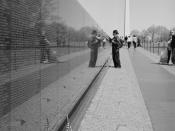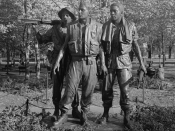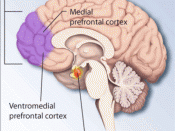American troops evacuated Saigon, South Vietnam on March 25, 1973. Three million veterans survived a tour of duty in Southeast Asia. 58,000 died there. For thousands who returned, the war was not over. Some estimates are that another 50,000 veterans have died due to psychological disorders related to experienced events of the war. This disorder is called Posttraumatic Stress Disorder (PTSD). The qualifications of PTSD can be found in Tim O'Brien's short story, "The Things They Carried".
Men in earlier wars have also shown symptoms of PTSD. It was called by various names: cowardice, lack of military discipline, "shell shock", "war neurosis", stress reaction, battle fatigue, accident neurosis. We now know that PTSD affects hundreds of thousands of people who have been exposed to and survived disasters such as airplane crashes, violent assault, rape, sexual abuse, and war. Psychiatrists estimate that up to 10 percent of the population have been affected by PTSD.
The following cluster of symptoms characterizes PTSD:
1. The person experienced, witnessed an event that involved actual or threatened death.
2. The person's response involved intense fear, helplessness or horror.
Symptoms (abbreviated list) include: the traumatic event is persistently reexperienced by recollections, recurrent dreams, feeling as if the event were recurring, distress at exposure to cues that resemble the traumatic event, avoidance of stimuli and numbing of general responsiveness and persistent symptoms of increased arousal such as exaggerated startle response, hyper vigilance, difficulty concentrating, difficulty with sleep, and irritability or outbursts of anger. (DSM-IV, 427)
Since the story, "The Things They Carried" (O'Brien, 1-25) does not include follow-up on the men involved, I will be focusing on what I consider to be the events and emotional stress which could have introduced these soldiers to PTSD. The soldiers responses to these...


